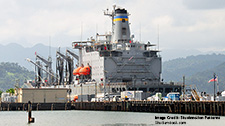What does China as Peacemaker between Saudi Arabia and Iran Mean to India?

Jagannath P. Panda
The China-brokered March peace deal between Iran and Saudi Arabia – the leaders of the Shia and Sunni worlds, respectively – is certainly an incredible achievement. As highlighted in the joint tripartite statement by the Kingdom of Saudi Arabia, the Islamic Republic of Iran, and the People’s Republic of China, the deal will usher in fast (within two months) resumption of diplomatic ties between the bitter West Asian rivals seven years after their total collapse triggered by the Saudi execution of the prominent Shia cleric Nimr al-Nimr.
The agreement also covers respect of each other’s sovereignty and non-interference in internal affairs – notably, a constant theme in China’s diplospeak – besides multifarious cooperation activities via the reactivation of the Security Cooperation Agreement signed in 2001 and the 1998 General Agreement for Cooperation. It, therefore, holds the potential to significantly reduce tensions in the region.
At the same time, the rise of China’s clout – the United Nations Secretary General, too, noted China’s contribution to promoting peace and dialogue – raises not only hackles but also several questions about whether the US and its allies and partners in the Indo-Pacific such as India are losing touch in their traditional stronghold. Will the Iran-Saudi Arabia-China trilateral agreement be limited to diplomatic breakthroughs? What would the agreement’s strategic impact on India entail? Will the I2U2 (India, Israel, UAE, and US) quadrilateral be impacted?
China Gains, US Loses Face?
In the past couple of years, the relevance of Middle East, especially of the US utilizing its precious resources toward the “dysfunctional” region, in US strategic policy was being increasingly questioned. The notion was that the declining energy resources in the Middle East had little to offer to the US; moreover, the lack of enough viable returns in past endeavors plus the continuous resource-draining regional turmoil was giving pause to the already embattled US about “chasing unrealistic expectations.” Thus, the US limiting its involvement in the region seemed a prudent choice.
The latest development has, however, insinuated a weakening of the US position in the regional, and in turn world, order, giving credence to critics decrying the US for its “declining capacity” to shape the strategic landscape or resolve challenges. At the same time, it is also contended that the US military presence in the Middle East has increased, and not dwindled, over the years. Therefore, even as it has been rightly pointed out that talk of American decline in the region as a whole is “premature” – and, above all, obsessing over such matters is an exercise in futility – the trilateral joint statement does highlight the lacunae in US policymaking in the Middle East at a time when the US is going all-out to counter Xi’s grand global ambitions.
By all accounts, China is emerging as an important player in the region. China already exercises considerable influence in Iran as a major investor and an essential economic partner owing to its investments in the country, and especially while Iran faces Western sanctions. With Riyadh, too, experiencing a tumultuous relationship with Washington, China has found it prudent to make inroads in the region and consolidate its position.
Moreover, under the Global Security Initiative launched last year, China has proposed a new security framework for the region (“the five-point proposal”). The new pact opening dialogue between Iran and Saudi Arabia, as well as the push to initiate more talks between Iran and the Gulf Cooperation Council (GCC), is part of Beijing’s long-term strategy in the region.
Unlike the US, China enjoys positive ties with most of the state actors in the region, as well as massive economic clout, which gives it a considerable advantage. Nevertheless, such an onerous task as peacemaking will engender “greater scrutiny” amid the responsibility of sustaining fragile goals. Whether China can achieve its regional goals in the long term, when the US has clearly failed to navigate the immensely complex region despite its years-long engagement, remains to be seen.
Beyond the China factor, if the Saudis and Iranians find a meaningful, long-term congruence in the deal, it would not be restricted to mere diplomatic dealings or goodwill cooperation. For example, Saudi investment in Iran will certainly impact the US efforts to pressure Iran via economic sanctions to curb its nuclear program. It might even sway states with historically close ties to Iran like India to reconsider its halted engagement (i.e., resumption of energy trade) with Tehran or a minilateral venture with both Tehran and Saudi Arabia.
It’s (Not that) Complicated for India?
In the aforementioned context, the Saudi-Iranian deal could be a welcome development for India: A rapprochement between Iran and Saudi Arabia that can bring about regional stability is in India’s interest. Ideally, the deal should help spur India’s trade with states in the region, and help New Delhi safeguard its varied, deep, and “abiding interests” in West Asia (Middle East).
Nonetheless, the Indian government has not come out with an effusive response to the deal; instead choosing to talk in generalities about supporting dialogue and diplomacy and maintaining its “good relations” with the wider West Asia due to “abiding interests.”
A large part of India’s reticence is due to China sponsoring the deal, Beijing’s rapidly growing presence and influence in West Asia. The move is Beijing’s first foray into mediation in the Middle East and has rather successfully cast China in a global governance (responsible) role in post-Pandemic world. Symbolically too, Beijing has emerged as a “new” and powerful player in the region – a role traditionally occupied by the US. Although its role in security affairs is yet to emerge.
Should China be able to establish a stronghold over the Middle Eastern region, as a politico-economic force and perhaps even as a security provider, it would have serious implications for India. Most significantly, the region is a source for two-thirds of India’s oil imports, and therefore critical not only to the country’s energy security but also to its rapidly growing economy. It is also a vital source of investments and remittances for India.
China’s emergence as a dominant player in West Asian regional politics would give it leverage to manipulate India’s interests. Should India-China relations deteriorate further, Beijing would have the ability to entirely compromise India’s position and even push New Delhi out of the Middle East. Thus, from this angle, due to Iran’s dependence on China amid debilitating sanctions and global isolation, as well as Saudi Arabia’s growing bonhomie with China and estrangement from traditional partner the US, the scenario might not seem to bode well for India. Yet, China’s own complicated geopolitical standing and unreliable global governance strategies, including the corruption-riddled BRI “debt traps” or questions over quality in products (e.g., low-quality vaccines and medical equipment) and in connectivity, leave enough room for Indian diplomatic maneuverings.
Moreover, it is not as if India is absent in West Asia – Prime Minister Modi’s “Look West” policy, part of the country’s aggressively marketed multi-aligned approach, is reaping dividends: from achieving the historical Comprehensive Economic Partnership Agreement (CEPA) with the UAE to operationalizing the Shahid Beheshti Port at Chabahar and envisioning strengthened trade network with West (and Central) Asia through the Russia-India-Iran-led International North-South Transport Corridor (INSTC).
With Saudi Arabia – home for about 2.2 million strong Indian expatriate community, which is a great source of soft power influence – the ties are growing (bilateral trade in the fiscal year 2021-2022 was US$ 42.8 billion), including in defense and renewable energy, too. During the pandemic, India provided 4.5 million Covishield vaccines to the Kingdom, which reciprocated by supplying India with COVID-relief materials, such as liquid oxygen. Hence, the two sides will not be inclined to throw their ties into disbalance.
The ties with Iran are more complicated because India has not resumed its oil trade due to the US sanctions. Post the Ukraine war, Iran even expects India to defy the US by importing oil, just like the latter did for Russia. India also has not been able to fully utilize the Chahabar port services (investment or transit), nor Iran able to connect the port with domestic rail network. But Iran’s overdependence on China and India’s willingness to balance out China makes it imperative that the two sides resolve differences at the earliest.
Notably, the Iran-China-Saudi deal is likely to end up countering the US-led I2U2: The presence of Israel gives the grouping a distinctive anti-Iran hue and longstanding allies the UAE and Saudi Arabia are being posited as “rival allies.” Thus, it becomes imperative for India to minimize its losses by fast-tracking a rapprochement strategy, including the revitalizing of its connectivity projects and clearing the air about India’s motives. In other words, India needs to review and reenergize its diplomatic and political outreach in the region that must have enough economic undertakings with strategic clouts. Such an approach might indeed turn out to be “win-win cooperation” (合作共赢), to borrow a turn of phrase extensively used in Chinese rhetoric.
This piece is first published in Foresight, a web magazine (in Japanese) belongs to Shinchosha Inc. in Tokyo.
Related Publications
-
ASEAN’s Evolving Alignment Strategy in the South China Sea: Between Middle and Major Power Dynamics
ASEAN is a region of vital strategic importance where the United States’ Indo-Pacific strategy and China’s Belt and Road Initiative (BRI) collide. To avert geopolitical uncertainty and to avoid being […]
-
Not Drawing a Parallel. Ukraine and Taiwan: An Indian Perspective
Russia’s war against Ukraine has not only had economic, diplomatic, and geopolitical repercussions, but also exaggerated the fear of accelerated conflicts in the Indo-Pacific, a region with several unresolved conflicts […]
-
Needed, a Framework to Protect Undersea Cables
In the data-driven world we live in, submarine cables are the arteries that connect nation-states and their people in literally every human activity, including trade, commerce, entertainment, and social interactions. […]
-
India-Japan-Philippines: A Strategic Maritime Trilateral or More?
Regional states like India, Japan, and the Philippines have been seeking cooperative solutions with other middle powers that can both counter the Chinese influence and fulfill other economic as well […]
-
The Political Split at the Heart of Taiwan’s Struggle against Foreign Disinformation
Taiwan’s struggle against foreign disinformation and concerns about China’s impact on its 2024 election has received much international attention recently. This issue brief examines the domestic and international politics behind […]




